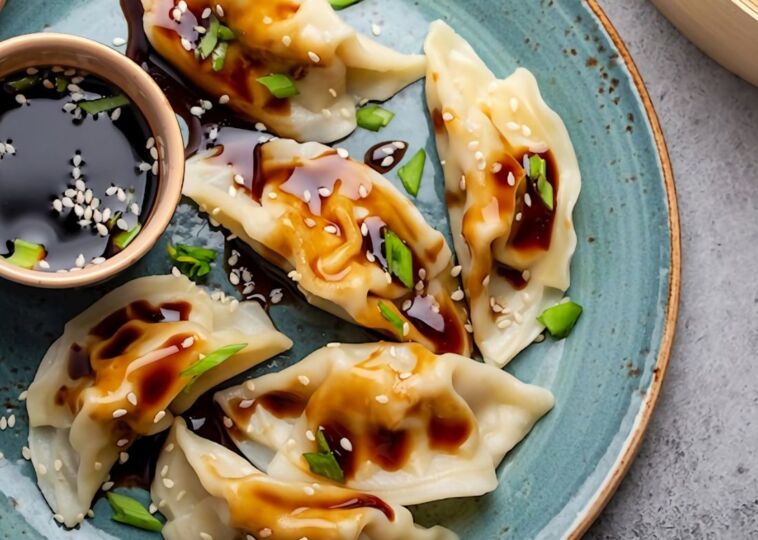The 6 Beijing’s Culinary Secrets You Must Discover!

Contents [hide]
This vibrant city isn’t just a hub of history and culture and a treasure trove for food lovers. From street vendors to high-end dining, Beijing’s culinary scene is brimming with surprises that will tantalize your taste buds and leave you craving more. Let’s Beijing’s culinary landscape is as rich and diverse as its history.
From the iconic Peking Duck to the bustling snack streets, each dish tells a story and tastes the city’s vibrant culture. So, whether you’re a seasoned foodie or just looking to try something new, Beijing promises a dining experience that will leave you savoring every moment.
The Magic of Peking Duck: A Culinary Icon

This legendary dish is not just a meal; it’s an experience, a tradition, and a must-try for anyone visiting Beijing. Its thin, crispy skin is at the heart of Beijing Roast Duck’s allure. The secret lies in a meticulous preparation process that involves air-drying the duck before roasting it to achieve that golden, crispy perfection.
Authentic Peking Duck is all about the presentation and the process. At renowned duck restaurants in Beijing, the duck is expertly carved tableside by a skilled chef. The process is a visual feast, showcasing the chef’s expertise and ensuring each slice of duck is served with a perfect ratio of skin to meat.
What makes Peking Duck even more remarkable is the way it’s enjoyed. The duck is typically served with thin pancakes, hoisin sauce, and fresh accompaniments like scallions and cucumber. Most upscale duck restaurants in Beijing will even provide a brief tutorial on creating the perfect Peking Duck wrap using chopsticks.
It’s a delightful hands-on experience that adds more engagement to your meal. You’ll want to dine at one of Beijing’s legendary duck restaurants to savor the magic of Beijing Roast Duck. Places like Da Dong, Quanjude, and Bianyifang are famous for their impeccable Peking Duck.
These establishments serve outstanding ducks and offer the whole Peking Duck experience, with skilled carving and detailed wrap-making instructions.
Beijing’s Ultimate Jiaozi Dumpling Delight

In Beijing’s vibrant food scene, one dish stands out as a true emblem of Northern Chinese cuisine: Jiaozi. These delectable dumplings, often known as potstickers or Chinese dumplings, are more than just a meal; they’re a cultural experience that embodies the heart and soul of Beijing’s culinary landscape.
Whether you’re a seasoned foodie or a curious traveler, the allure of Jiaozi is undeniable. Jiaozi is ubiquitous across Beijing, a beloved staple that has graced tables in homes, street vendors, and high-end restaurants. What sets Jiaozi apart is not just the dish itself but the rich tradition and technique behind it.
While renowned dumpling chains and popular restaurants offer a wide array of Jiaozi, some of the most memorable experiences are found in humble, family-run eateries where dumplings take center stage. These smaller establishments, often tucked away from the bustling main streets, serve up Jiaozi with an authentic and incredibly satisfying personal touch.
The magic of Jiaozi lies in its simplicity and versatility. What truly elevates Jiaozi is how it’s served. Traditionally, a plate of Jiaozi is accompanied by a dipping sauce made from soy sauce, vinegar, and a touch of chili oil.
Jing Jiang Rousi, Shredded Pork in Beijing Sauce

This shredded pork dish, bathed in a luscious sweet bean sauce, is a testament to Beijing’s knack for turning simple ingredients into extraordinary flavors. Unlike many beloved Chinese dishes with roots scattered across various regions, Jing Jiang Rousi was born right in the heart of Beijing. What makes Jing Jiang Rousi so unique?
It’s all about the balance of flavors and textures. This dish features tender slices of pork stir-fried in a rich, sweet bean sauce, known for its umami depth and subtle sweetness. The pork is shredded into bite-sized pieces, allowing it to soak up every drop of that savory sauce. But Jing Jiang Rousi isn’t just about the pork.
It’s traditionally served with soybean wraps, the perfect vessel for scooping the flavorful meat. You might think of it as Beijing’s answer to a taco, where the wrap is as essential as the filling. So why should Jing Jiang Rousi be at the top of your must-try list when exploring Beijing’s culinary landscape?
For one, it’s a dish that encapsulates the essence of Beijing’s approach to food: taking simple ingredients and crafting something memorable. It’s also a dish locals adore, so you’ll dive into a part of Beijing’s authentic dining experience. Whether you’re a seasoned foodie or a curious traveler, Jing Jiang Rousi offers a taste of Beijing’s homegrown culinary pride.
Noodles with Soybean Paste, Zhejiang Mian

When you think of Beijing’s culinary scene, one dish that consistently steals the spotlight is Zhejiang Mian. Often referred to as ‘Beijing noodles, ‘ this beloved staple is more than just a meal; it’s a vibrant slice of Beijing’s rich food culture. The star of Zhejiang Mian is its hand-pulled noodles, which are comprehensive, chewy, and incredibly satisfying.
These noodles are crafted from scratch, giving them a unique texture that pairs perfectly with the savory sauce. This traditional method of making noodles adds a touch of authenticity and a delightful bite to each serving. The sauce that defines Zhajiang Mian is a rich soybean paste mixed with pork, creating an umami-packed, savory, and slightly sweet flavor.
This sauce is the heart of the dish, coating each noodle strand with a luscious layer of taste that’s both comforting and deeply satisfying. What makes Zhajiang Mian even more remarkable is its variety of vegetables. These veggies add a crisp, refreshing contrast to the hearty noodles and rich sauce, making every bite a harmonious blend of textures and flavors.
Zhejiang Mian is your perfect lunchtime companion if you’re on the go. It’s served quickly, often just seconds after you place your order, making it an excellent choice for visitors with limited time. Plus, it’s remarkably budget-friendly, offering a delicious and filling meal without breaking the bank.
Timeless Charm of Mongolian Hotpot

Step into the heart of Mongolian cuisine with a dish that’s been delighting taste buds for over a millennium: Mongolian Hotpot. This beloved culinary tradition isn’t just about savoring delicious flavors; it’s an interactive dining experience that brings people together around a bubbling pot of warmth.
Ready to Let’s explore why Mongolian Hotpot is a timeless treasure in the world of food. This is the essence of Mongolian Hotpot, a meal that’s as much about the cooking process as it is about the result. Traditionally, this dish involves cooking your ingredients in the communal pot, making the dining experience a shared and engaging activity.
The act of preparing and cooking your food right at the table adds an element of fun and connection, turning every meal into a memorable event. Unlike its Southern Chinese counterparts, known for their bold and spicy broths, Mongolian Hotpot features a more subtle and understated soup base.
The broth is usually less spicy and more focused on complementing the ingredients’ natural flavors rather than overpowering them. This allows the quality of the meat, vegetables, and other add-ins to shine through, making every bite a testament to the freshness and taste of the ingredients. The beauty of Mongolian Hotpot lies in its interactive nature.
Tanghulu: Beijing’s Irresistible Candied Fruit Treat

Step aside toffee apples; there’s a new sweet sensation in town, and it’s called Tanghulu. This classic Beijing delicacy, often dubbed the Chinese toffee apple, is more than just a treat; it’s a burst of nostalgia and flavor wrapped around a stick.
If you haven’t tried Tanghulu yet, prepare for a sweet adventure combining the crunchy perfection of candied fruit with the vibrant energy of Beijing street life. The magic of Tanghulu lies in its texture. It’s a delightful contrast to the tender fruit inside, creating a snappy, sweet, and tangy flavor explosion.
Each piece is a perfect balance of crispiness and juiciness, making Tanghulu a treat and an experience. In the bustling streets of Beijing, Tanghulu is more than a snack; it’s a cultural icon. It’s a favorite among kids and adults alike, not just for its deliciousness but also for its visual appeal.
Tanghulu is more than just a sweet indulgence; it’s a slice of Beijing’s vibrant street food culture. It’s an easy, on-the-go snack that perfectly encapsulates the fun and flavor of the city. Plus, with various fruits, there’s a Tanghulu for every taste preference.


